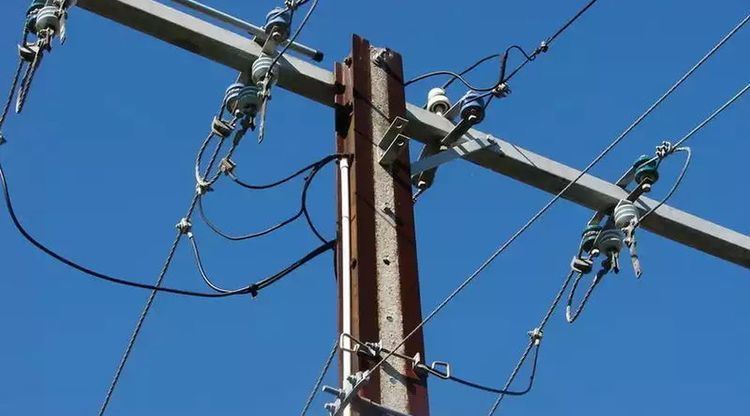 | ||
Similar Pylons of Cádiz, Shukhov Tower on the Oka R, Mall's Balls, Pylons of Messina, Adelaide Park Lands | ||
Car vs stobie pole newton south australia
A Stobie pole is a power line pole made of two steel joists held apart by a slab of concrete. It was invented by Adelaide Electric Supply Company engineer James Cyril Stobie (1895–1953). Stobie used materials easily at hand due to the shortage of suitably long, strong, straight and termite-resistant timber in South Australia.
Contents
- Car vs stobie pole newton south australia
- Twin steertruck v stobie pole fail
- History
- Installations
- Design
- Artistic use
- References
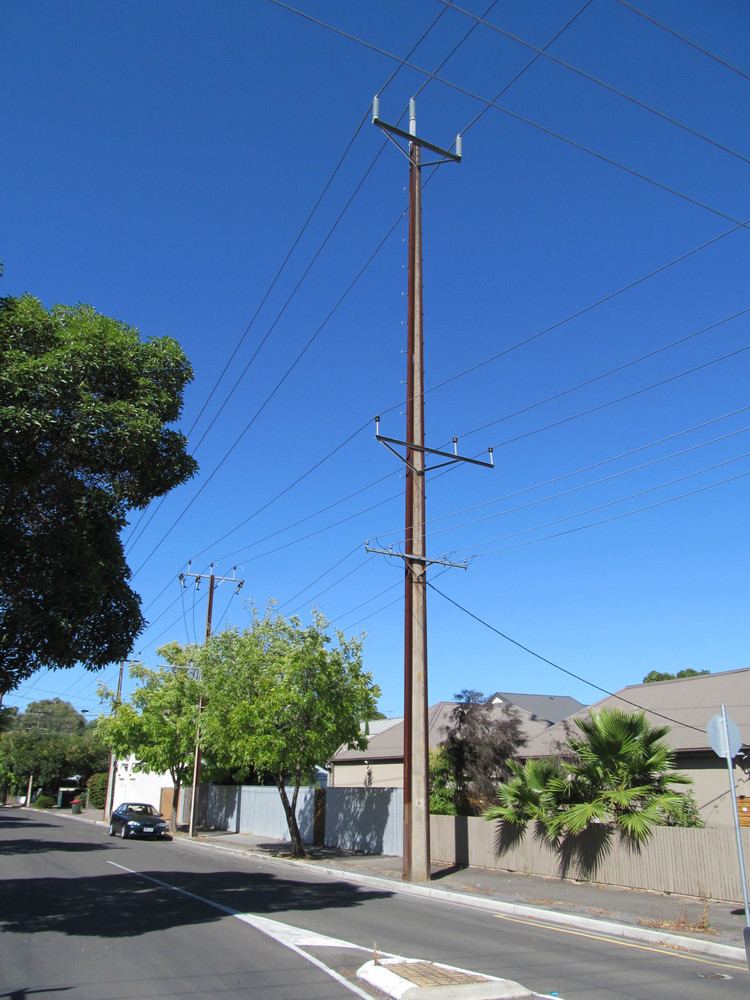
Twin steertruck v stobie pole fail
History
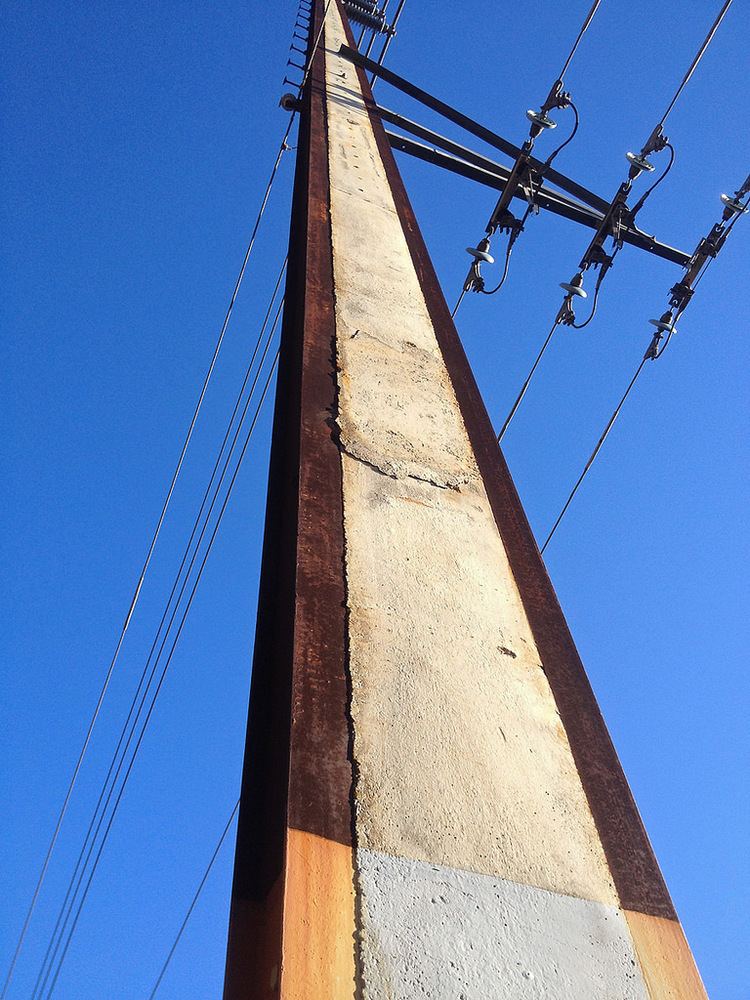
In July 1924 the patent application for the pole design was submitted in both English and French, and accepted in November 1925. Stobie described his invention as
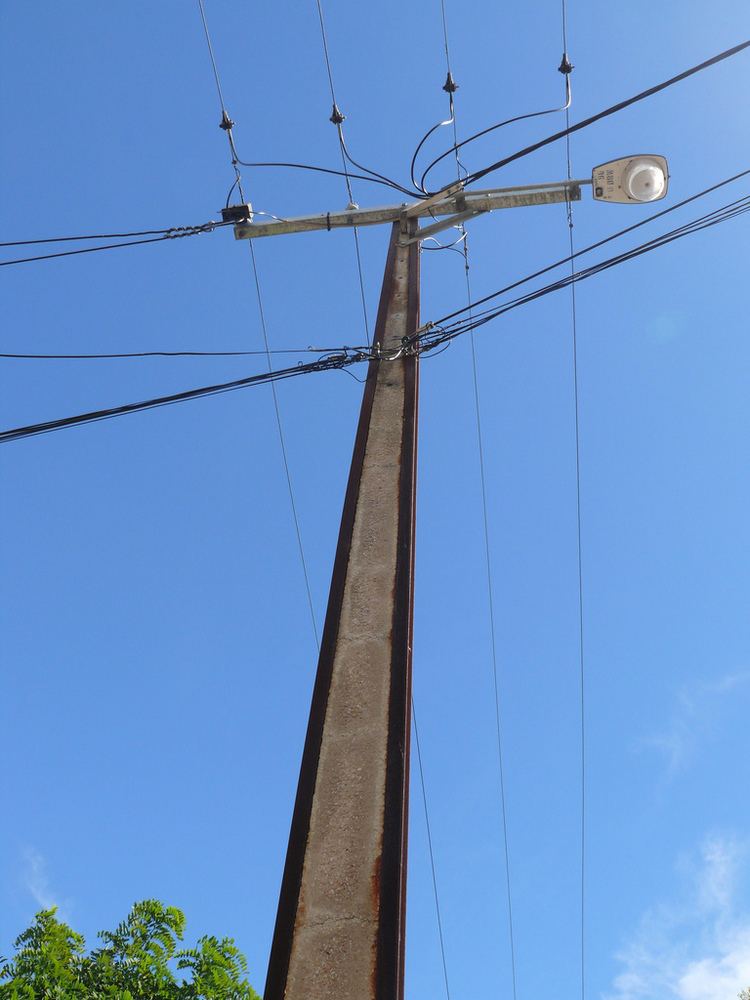
"an improved pole adopted to be used for very many purposes, but particularly for carrying electric cables, telegraph wires... [it] consists of two flanged beams of iron or steel, preferably rolled steel joist of 'H' or of channel sections, placed one beside the other with their flanges inward and preferably at a very slight angle one with the other and held together by means of tie bolts, the space between them being filled with cement concrete."
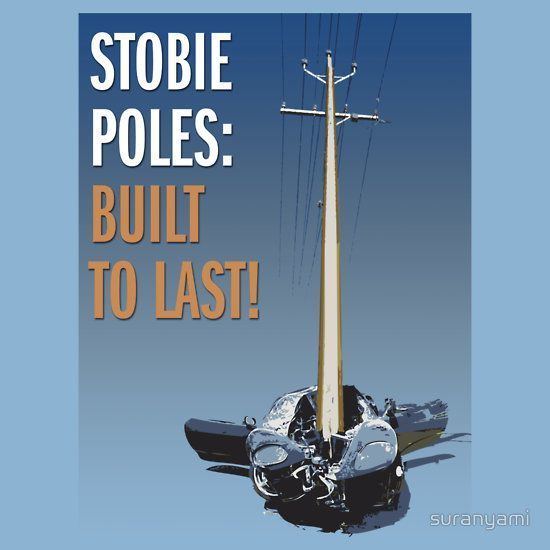
Stobie and John Brookman were so confident of the new pole that they formed The Stobie Pole Syndicate for the purpose of patenting the design and then selling the patent or manufacturing rights. The Hume Pipe Company became their first agents and, while there were numerous international enquiries, South Australia has largely remained the only place where they are widely used.
Installations
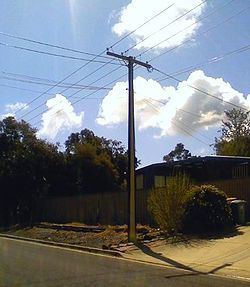
Stobie poles are reasonably common in Broken Hill, New South Wales, as well as the Darwin, Northern Territory CBD and a few thousand are installed across Tasmania. A few also exist in isolated settlements in the Goldfields-Esperance region of Western Australia such as Eucla and Rawlinna.

The first poles were erected in South Terrace, Adelaide in 1924, and were then used extensively in building the electricity transmission and distribution infrastructure throughout the state. The Stobie pole was central to the speedy expansion of Adelaide Electricity Supply Company's supply. It was cheap and simple to produce, had a uniform appearance, saved an enormous amount of timber from being cut down, had a long life expectancy and, at the time, was seen as more environmentally sensitive. SA Power Networks review alternative pole designs available on the market and has yet to find one with the benefits offered by the Stobie pole.
Design
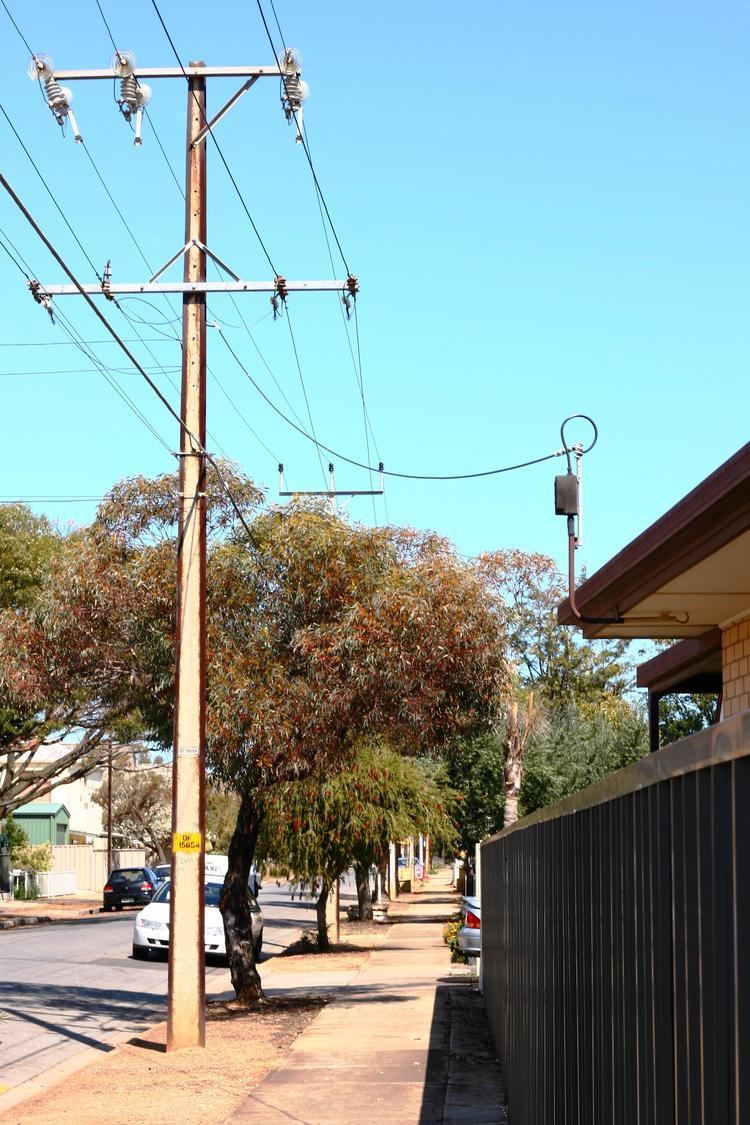
The poles carry supply voltages from 240 to 275,000 volts and come in various sizes from 9 to 26 metres in length, though studies indicate heights to 36 metres are feasible. The expected service life of a Stobie pole is predicted to be in excess of 80 years. It is now commonly regarded as a South Australian icon. SA Power Networks manufactures Stobie poles at a plant in Angle Park, South Australia.
Its modern construction is a composite of two steel beams connected intermittently by bolts to manage compressive buckling, with the gap between the beams filled with concrete. The bolts transfer the shear, with an equal number of bolts above and below ground. The poles are tapered from ground level to the top and the toe. This construction uses the tensile properties of the steel, giving the poles excellent properties in bending. Stobie pole strength in the strong direction may be up to 4.5 times the weak direction strength. Small holes through the concrete enable easy attachment of modular cross-arms, insulators and other hardware. The poles are fireproof, rotproof, and termiteproof. Stobie poles are widely regarded in Australia to be dangerous to vehicles, with collisions sometimes "almost cutting the vehicle in half." There are those in the industry who claim that steel bends more than wood, but such claims do not take into account the smaller cross-section Stobie poles present to vehicles.
Stobie pole designs are carefully calculated to ensure the installation uses a suitably sized pole. Factors such as physical mass (static load) of transformers, cross beams, voltage regulators, protection devices, conductors (including tension), etc. are carefully considered, however the wind loading (dynamic load) of this equipment must also be calculated. In some cases the wind loading factors far exceed the static load values.
Artistic use
Attempts have been made to beautify their appearance through Stobie pole gardens and Stobie pole art projects. Renowned artist Clifton Pugh painted Adam and Eve in the Garden of Eden on a Stobie pole in 1984, but was subsequently asked to "cover up" the genitals on his painting.
Over the years, a number of Adelaide primary and high schools have also painted murals on Stobie poles located outside the schools.
